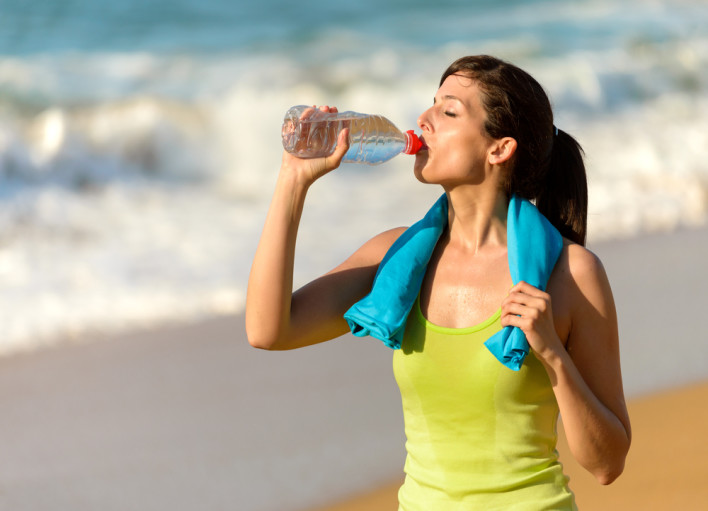It’s that time of year when you step outside and feel that thick summer heat wrap around you. From backyard barbecues to long days on the job site, warm weather pulls us outdoors but sometimes pushes our bodies harder than we realize.
Heat stress is more than just discomfort. Left unchecked, it can lead to cramps, exhaustion, or even life‑threatening heatstroke. The good news: With a handful of easy habits, such as staying hydrated, taking breaks in the shade, and dressing for the weather, you can keep yourself, your family, and your coworkers out of harm’s way.
In this short guide, you’ll learn how to spot early warning signs of heat illness and take quick action to stay safe all summer long.
Why heat safety awareness matters
Every summer, emergency departments across Ohio experience a sharp increase in heat-related visits. The Centers for Disease Control and Prevention estimates that about 700 people across the United States die from extreme heat each year (Centers for Disease Control and Prevention, 2024), and thousands more seek care for cramps, exhaustion, or heatstroke.
At Adena Health, our caregivers often treat outdoor workers, athletes, and older adults who have stayed in the sun a little too long. Early awareness can prevent that trip to the hospital.
Heat safety helps you:
Detect trouble early: Thirst, dizziness, heavy sweating, or nausea signal it is time to cool down and drink fluids before your body overheats.
Shield higher‑risk neighbors: Children, adults over 65, people with heart or lung disease, and pregnant individuals heat up faster and dehydrate sooner.
Keep work and play on schedule: Heat illness can halt construction projects, sports practices, and family events, leading to lost income and missed memories.
Prevent tragedy: Severe heatstroke can raise body temperature above 104°F, leading to organ damage or death if treatment is delayed.
With a little planning, such as packing water, choosing lightweight clothing, and checking the forecast, you can enjoy summer safely.
Recognizing heat-related illnesses
Knowing what symptoms to look out for during extreme temperatures can save your life or at least prevent further health issues. Symptoms often start mild but can escalate quickly.
Be alert to these signs of heat exhaustion:
Heavy sweating
Dizziness or weakness
Muscle cramps or nausea
Identifying these symptoms early can help you safeguard your health and prevent heat exhaustion from progressing to heatstroke, which can be life-threatening. Seek immediate medical help if these symptoms appear or worsen.
Top heat safety tips for everyone
Before you lace up your shoes or fire up the grill, take a minute to prep for the heat. The habits below work for kids, adults, and older neighbors alike.
Wear lightweight, light‑colored clothing that allows sweat to evaporate.
Drink water throughout the day, even if you do not feel thirsty. Aim for a cup every 15 to 20 minutes when active outside.
Skip or limit caffeine and alcohol, which can speed up dehydration.
Reapply a broad‑spectrum sunscreen with SPF 30 or higher at least every two hours.
Use air‑conditioned spaces or portable fans to cool down between activities.
Plan strenuous chores or workouts for early morning or late evening when temperatures are lower.
Following these steps reduces your risk of heat-related illness and helps keep your summer plans on track.
When to seek medical help for heat illness
Even with good preparation, heat illness can still strike. Act fast and call 911 or go to the nearest emergency department if someone:
Becomes confused or disoriented.
Faints or loses consciousness.
Registers a body temperature of 103°F or higher.
For milder symptoms that do not improve after cooling off, such as heavy sweating, dizziness, or muscle cramps, visit Adena Urgent Care. Walk in or reserve a same‑day spot online at Adena.org/UrgentCare.
Taking quick action can prevent serious complications and keep summer memories sunny.
